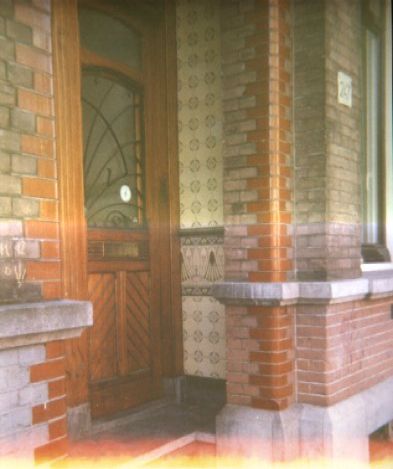


Amsterdam proper is like a spider surrounded by a web of waterways, the so-called "Grachtengordel". As it grew, it extended to the west, south and east, and hopped over some more waterways to the north. Eastwards and south-westwards, Amsterdam is still recognizably the old Big City, peopled by merchants, the rich, and large groups of poor labourers displaced from rural areas who formed closely knit neighbourhoods where everyone knew everyone else, collectively called "de Jordaan". In northerly and south-easterly directions lie failed attempts at creating the perfect suburb in the spirit of the Modern Age (now one century behind us): dreary apartment blocks and broken windows. Close to the centre, "Amsterdam-Zuid" is still quite a classy place, with the standard quaint old houses that grace city centres. As one goes further away, the buildings become more "modern", greyer, more devitalizing, until one comes to the horrible fascistoid pseudo-respectable Amstelveen, which fortunately I've only ever passed through sitting in a bus. These pictures were taken from bus 197 on the journey northwards.
Hilariously, the neighbourhood containing these ultra-ugly buildings is called "Troostwijk". "Troost" means "consolation" and these surroundings are indeed disconsolate. How people can live here without getting the urge to jump off high buildings, I don't know. In time, I suppose, one develops a blind eye to one's environment.
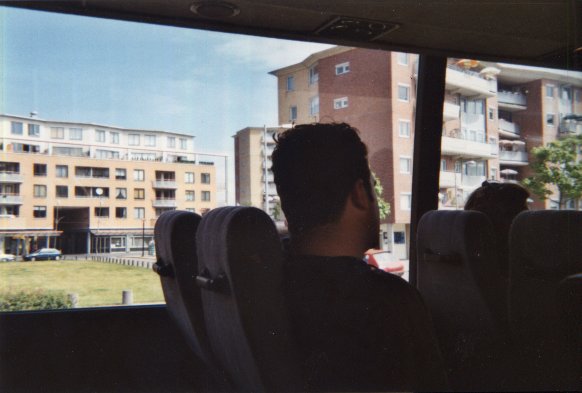
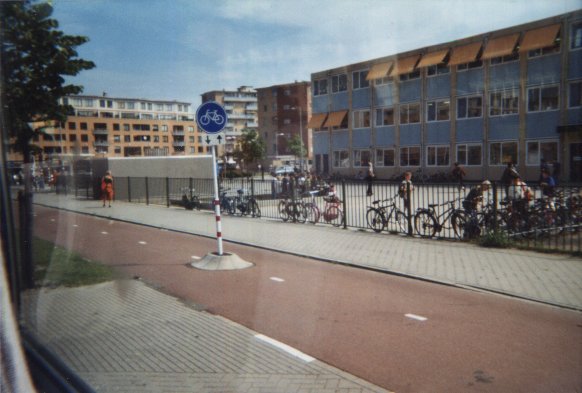
Barely any better: just across the road from rows of rubbish containers, a hospital. And this is what it looks like on a bright sunny day.
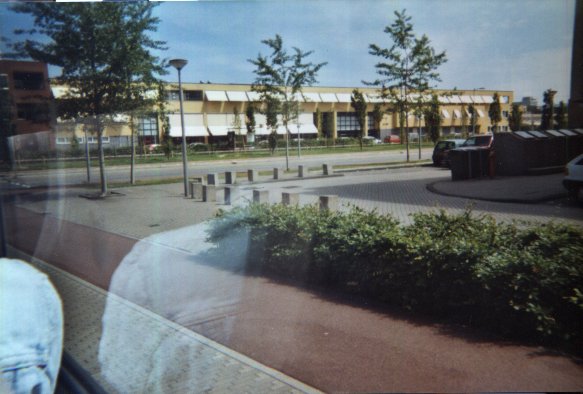
A last bit of ghastliness before quitting the dumps. Buildings like this have featured in nightmares of mine.
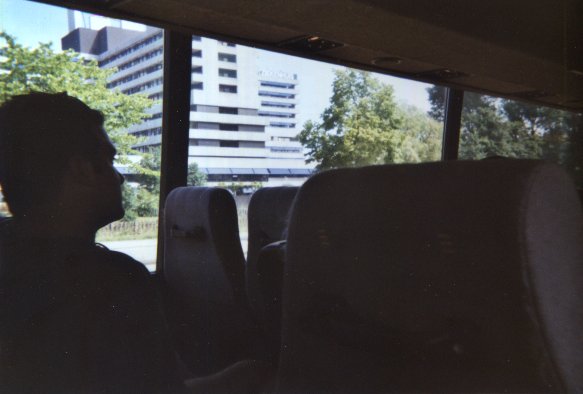
Sighs of relief as the bus swings into still gloomy, but less dreary quarters. The building at the back on the second picture has a kind of parapet running along its roof edges. Construction work is going on in the background.
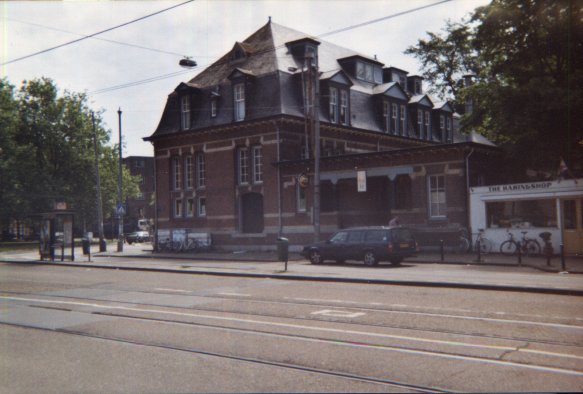
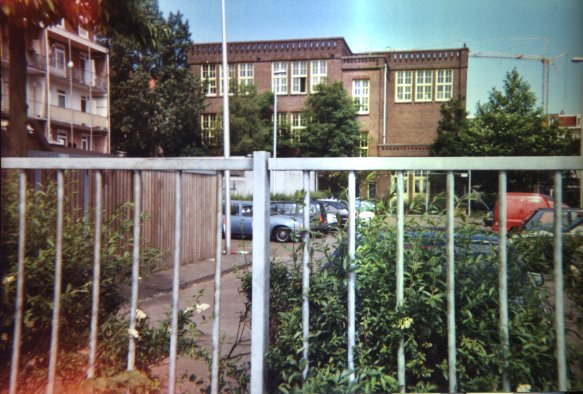
A little square with bus stops at all sides where trams and buses flow in a vortex-like movement, and a good place to change buses. This square I remember (though not its name) for a herb shop, a sweets shop and other such useful places, probably all gone by now.
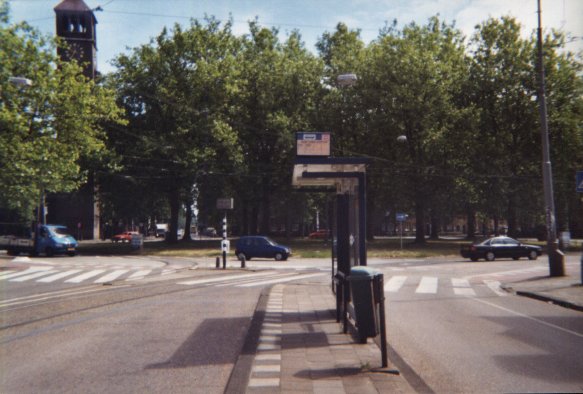
Amsterdam proper, and the place to live. Plants spill out from the balconies of high houses that have none of the menacing dreariness of modern apartment blocks. The second photo shows one side of the street beautifully reflected in a window on the other side.
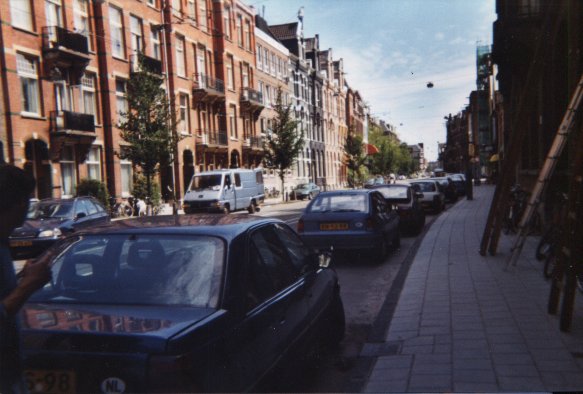
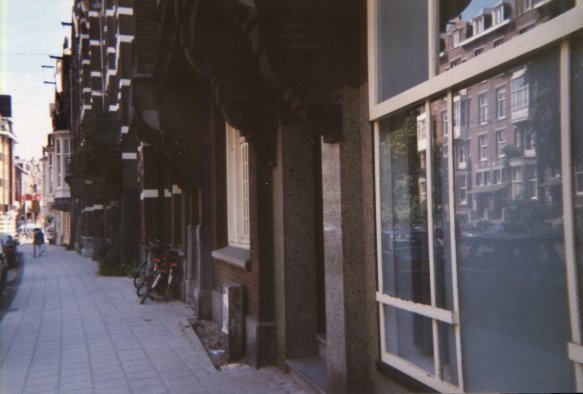
This photo sadly suffers from slight exposure, but I kept it anyway to show what makes the old houses of Amsterdam (and, one assumes, any city centre) so special: attention to detail. In this case, to the tiling around the door.
